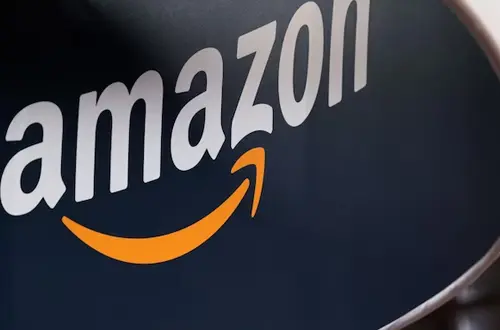How Amazon’s Grocery Delivery Service Differs From Other 3pl Services
Amazon launched a new grocery delivery service in the United States on April 23, aiming to provide Prime members and customers using EBT (Electronic Benefit Transfer) with more convenient delivery options for daily food and groceries.
What are the features of a grocery delivery service?

Prime membership benefits
Prime members pay $9.99 per month to enjoy grocery delivery services, and the membership fee is usually repaid after completing one delivery per month.
Discount for EBT card holders
Customers with a registered EBT card do not have to pay Prime membership fees and can enjoy the service for just $4.99 per month with a 30-day free trial.
Unlimited delivery
Prime members and EBT card holders can enjoy unlimited shopping at Amazon Fresh, Whole Foods Market, and local grocers and specialty retailers on Amazon.com with orders over $35. Grocery delivery service.
Convenient delivery and pickup
Users get convenient delivery and pickup times from Whole Foods Market and Amazon Fresh, including a free 1-hour delivery window and unlimited 30-minute pickup for orders of any size.
recurring booking priority
Weekly grocery orders can be prioritized using the recurring booking service, providing convenience for users who buy groceries regularly.
Extra offer
Members who shop at Amazon Fresh and Whole Foods Market also get exclusive deals online and in-store. Eligible Prime members can also receive additional benefits when shopping online with their Prime Visa card on Amazon.com.
Promote Amazon Fresh
One of the main purposes of Amazon launching this service is to promote its Amazon Fresh service and expand sales paths through a combination of online and offline methods.
market competition
Amazon's move may also be an attempt to compete with rivals such as Walmart and Target in the fresh food delivery service market, especially Walmart, which has an extensive store network in the United States and has already launched fresh food delivery services.
The impact of Amazon's new grocery delivery subscription service on third-party logistics providers
The expansion of Amazon’s logistics capabilities poses a direct threat to traditional 3PL providers such as FedEx and UPS.
Amazon’s vast warehouse network, advanced technology, and ability to consolidate shipments can result in faster delivery times and lower costs compared to 3PL providers. As Amazon continues to invest in its logistics infrastructure, including electric delivery vans and trucks, it may further reduce 3PL provider pricing.
Advantages of Amazon Logistics
Control and monitoring: By handling deliveries through its own logistics network, Amazon can better control and monitor the entire process, addressing customer concerns such as delivery delays, damage in transit, and inconvenient delivery times.
Increased delivery capabilities: Amazon Logistics can offer services like weekend, evening, and holiday delivery, as well as options like leaving packages with neighbors that traditional carriers may not offer.
Faster delivery times: With its extensive warehouse network and advanced logistics technology, Amazon can offer faster delivery times, including same-day and two-hour delivery options for Prime members.
Customer Satisfaction: By controlling the fulfillment process, Amazon can better meet customer preferences and provide a more seamless shopping experience, potentially improving customer satisfaction.
Advantages of third-party logistics (3PL) delivery services over Amazon delivery
- Customized services: Third-party logistics service providers can usually provide more flexible and customized services to meet the unique needs of specific customers.
- Cost-effectiveness: For some businesses, especially small and medium-sized enterprises, using a 3PL may be more cost-effective because they can pay for services on demand without investing in building their own logistics network.
- Resource concentration: Enterprises can focus their limited resources on core business rather than logistics operations, thereby improving overall operational efficiency.
- Risk diversification: By outsourcing logistics, companies can diversify logistics-related risks, such as inventory backlog, transportation losses, etc.
- Professional technology and experience: 3PL service providers usually have professional logistics management and technical teams and can provide more professional logistics solutions.
- Global network: Many 3PL service providers have extensive domestic and international logistics networks, which can help companies easily achieve cross-border transportation and global market expansion.
- Flexibility and scalability: Third-party logistics services can quickly adjust the service content and scale according to the needs of the enterprise, and adapt to the increase or decrease in the enterprise's business volume.
- Innovative management: 3PL service providers may introduce innovative logistics management technologies and advanced information systems to help companies improve logistics efficiency.
- Improve corporate image: Third-party logistics service providers can help companies improve customer satisfaction and brand image through professional services.
- Reduce fixed asset investment: Using 3PL services can reduce enterprises’ investment in logistics facilities and equipment, thereby reducing the burden on fixed assets.
- Information technology advantages: 3PL companies usually have advanced information technology systems that can provide more efficient order processing and inventory management.
- Customer service: 3PL service providers can provide professional customer service, including after-sales support and personalized services, to enhance customer satisfaction.
Compared with Amazon's FBA, third-party logistics service providers may provide more choices and greater flexibility in some aspects, especially for those businesses that require specific logistics solutions. However, which service model to choose depends on the specific needs of the enterprise, cost considerations and the capabilities of the service provider.





